If you’re a business owner or marketer, you know it’s important to keep track of your website’s analytics. One statistic you may be interested in is the number of pages viewed per session. In this blog post, we’ll explain how to increase the number of pages viewed per session on your website. We’ll also provide tips on improving your website’s overall user experience.
What Is Meant By Pages Viewed Per Session?
The number of pages a person can view in a particular session is known as the pages viewed per session. You can calculate this metric when you divide the pageviews by the number of sessions in total.
While pages viewed per session is a fairly straightforward metric, it can still be helpful in understanding your audience’s engagement with your site. For example, if you see that the average number of pages viewed per session is low, it could indicate that your visitors are leaving your site quickly.
On the other hand, a high number of pages viewed per session could mean that users are finding your site’s content interesting and are spending more time on your site as a result.
Why Are Pages Viewed Per Session Important?
It is crucial because your website’s success depends on how well it can keep the user interested enough to explore pages beyond their initial landing page. A site with high Page Views Per Session and a long Average Time On Page will generally lead you towards higher conversion rates for potential customers!
When it comes to analyzing website performance, there are many different metrics that you can track. However, one of the most important measures of success is pages per session. This metric tells you how many pages, on average, each user visits during a single session.
A high page per session indicates that users find your site informative and engaging and spend time exploring its content. Conversely, low pages per session could mean that users quickly leave your site due to a lack of interest or poor navigation. For this reason, tracking your pages per session number and striving to increase it over time is essential. Doing so can ensure that your website provides an enjoyable experience for users and drives conversions.
How To Calculate Pages Viewed Per Session
To calculate the number of pages viewed per session, divide the total number of pageviews by the total number of sessions. This number will give you an average of how many pages are viewed during each session.
Count(Total Page Views) / Count(Total Sessions)
Keep in mind that this is just an average, and some sessions may have more or fewer pages viewed. Additionally, you can use this metric to compare the average number of pages viewed per session between different periods.
For example, you might want to see if there has been a change in the average number of pages viewed per session over the course of a month. If you notice a significant decrease, this could indicate that your website is losing users’ attention.
Various other factors could also influence this metric, so be sure to consider those. Ultimately, the number of page views per session is just one metric that can be used to assess user engagement on a website.
What Are Good Pages Viewed Per Session?
The more pages a site has, the better. A score of 4 or 5 is what you can expect from sites in the top 20% for an average number per session – with six being excellent!
Here is an example of a grocery store having the best page views per session:
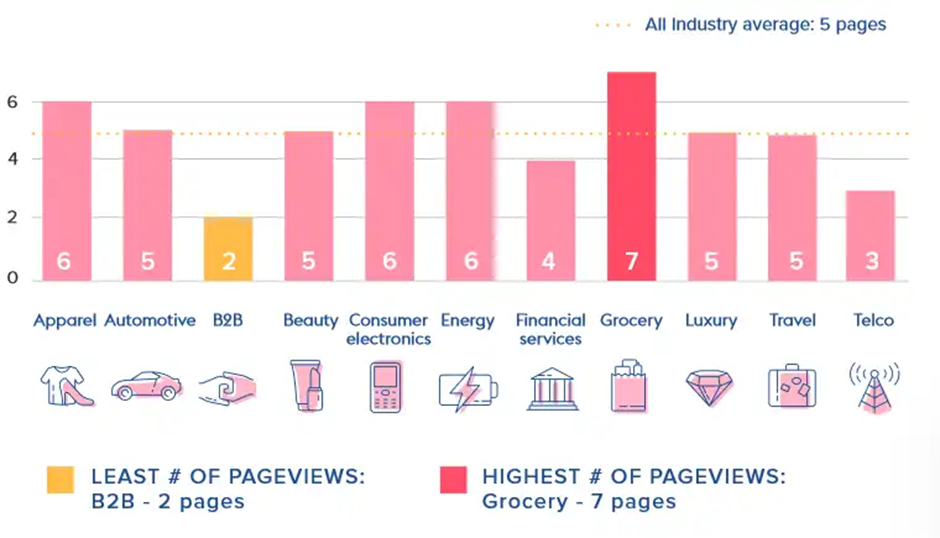
After all, if a website’s average number of pages viewed per session is low, that could be a sign that something’s wrong – either with the website or with how users interact with it. On the other hand, if a website’s average number of pages viewed per session is high, that could be a sign that users are engaged and finding the content they’re looking for. So what is a “good” number of pages viewed per session? Unfortunately, there’s no easy answer to that question.
It depends on the type of website, the type of content, and the user base. For example, a news website might have more pages viewed per session than an e-commerce website because users typically read multiple articles in one sitting. Similarly, a website with long-form content might have more pages viewed per session than a website with shorter articles because users need to click through multiple pages to read the whole piece. Ultimately, it’s up to each website to decide the number of pages viewed per session is right for them.
Tools To Track Pages Viewed Per Session
There are two most helpful tools that you can use to track your pages viewed per session:
- Google Analytics
- Databox
Track Pages Viewed Per Session By Gooogle Analytics
You can use Google Analytics Acquisition Overview to track pages viewed per session. It is located along the sidebar at the left.
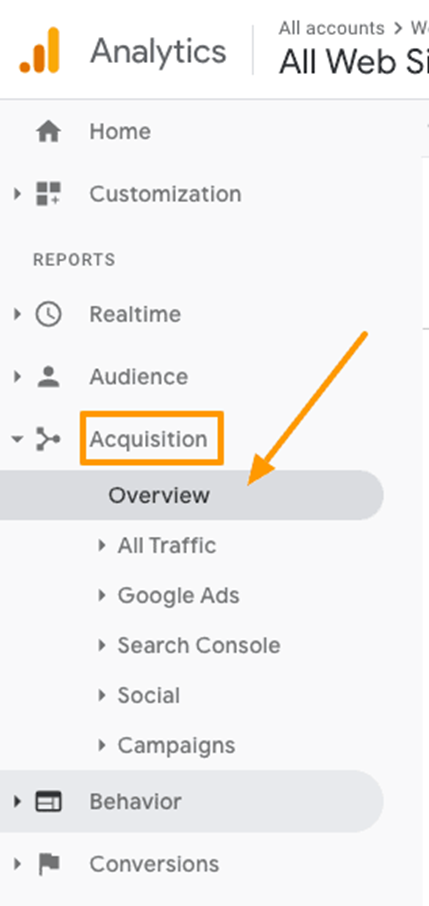
You can get the overview of your complete website’s total pages per session here.
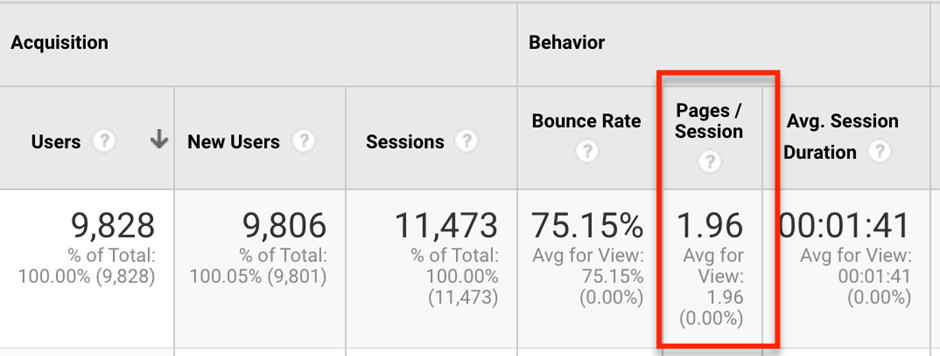
This is not all! You can also see the average session pages per channel, source, and medium. This will help you understand which traffic sources bring in engaged users, so that’s something worth checking out if your numbers are low compared to others on their platform or industry-wide.
In order to see all of your traffic reports, go into Google Analytics and select Acquisition>All Traffic from the left sidebar.
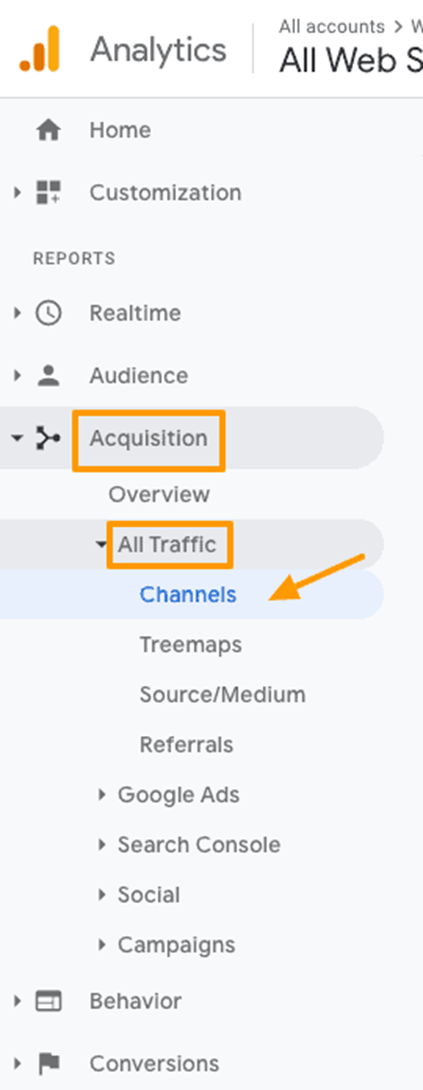
This is where you can see how many pages an individual user views on their first visit. This will give insight into what channels are driving higher-engagement visitors so that we know which ones need more focus for success!

Track Pages Viewed Per Session By Databox
Page views are an important metric for marketers to track. It’s good practice but even more helpful when visualized in a way that makes it easy and quick to spot trends or discover insights from your data set by using Databox’s Pages Per Session visualization tool!
Here are some ways we know:
Pages Per Session
You can also see in this line graph how our engagement has been fluctuating over time. It’s essential to track the success of different campaigns by looking at these daily fluctuations so we know which ones work best for us!
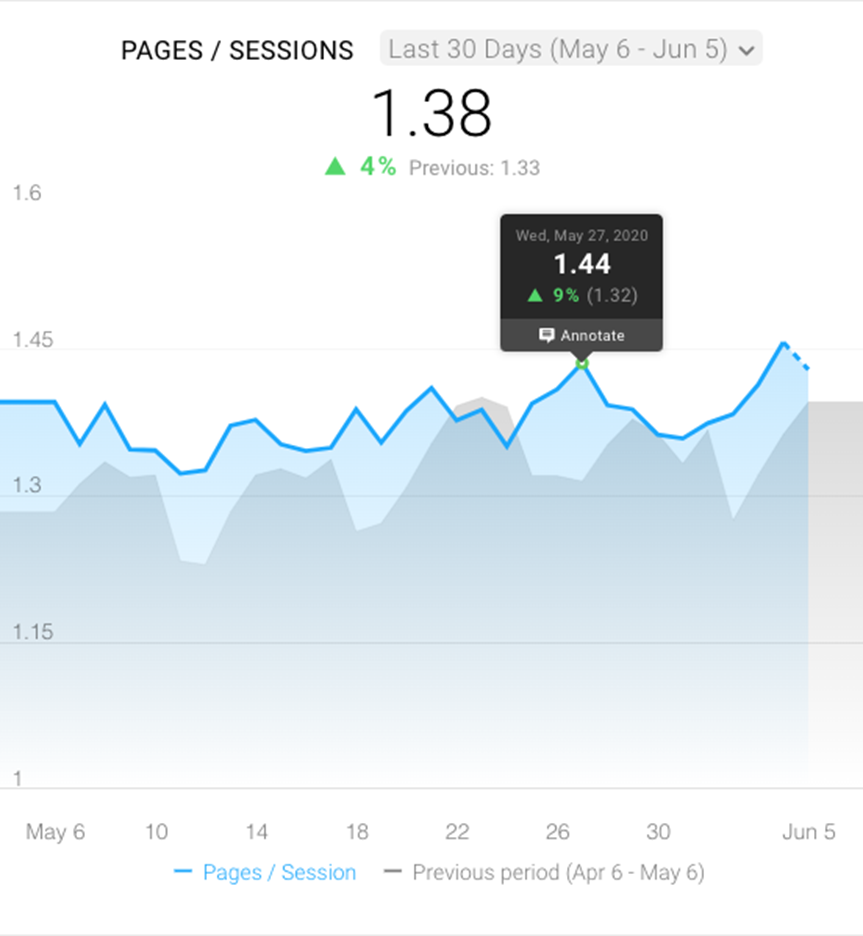
Organic Pages Per Session
Each page can be segmented by channel or source so you’ll know when it’s most appropriate to post on social media.
The bar graph in Databox helps you visualize your average pages per session, specifically from organic traffic. Suppose it’s a content marketing strategy that works for you. In that case, we recommend using this type of visual representation on an entry page. Visitors are more likely to leave once they’ve seen all there is and go elsewhere. So knowing who has come back after clicking through can give insight into whether or not these people find what interests them about our site before leaving again!
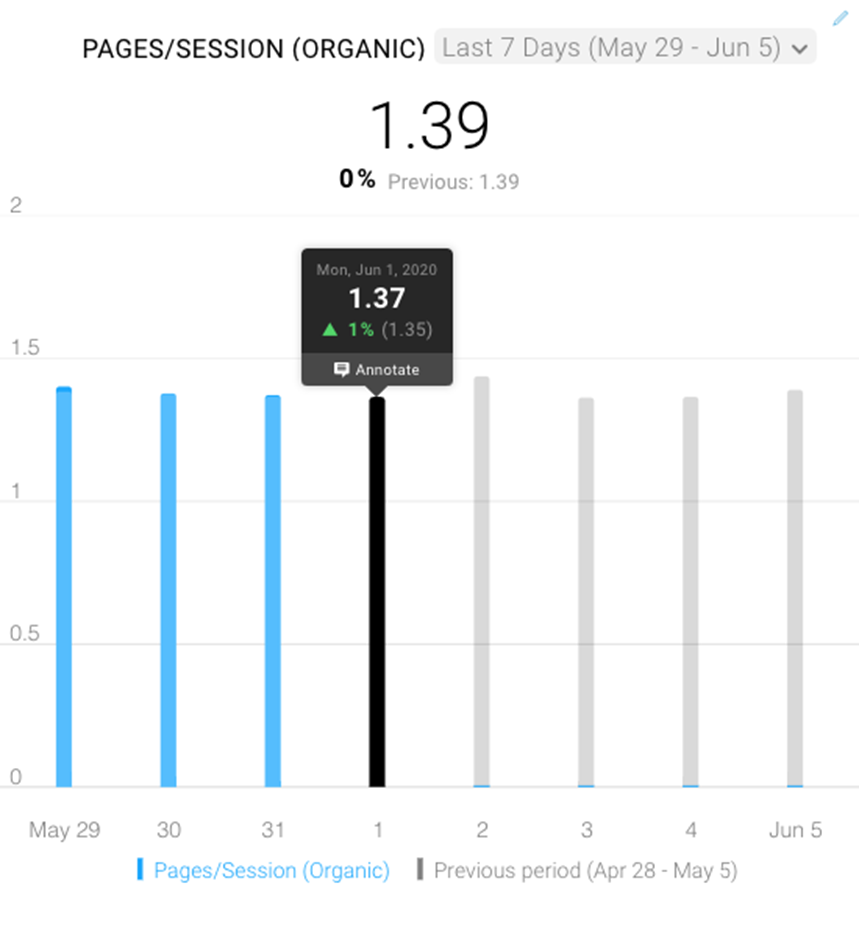
Tips To Increase Pages Viewed Per Session
It’s no secret that one of the key metrics for any website is pages per session. This metric tells you how many pages, on average, a user views during a given session. Here are the top 10 tips to increase the pages viewed per session:
Improve Your Website’s Navigation
Make it easy for users to find their way around your site. Use clear and concise labels, and consider using drop-down menus or other navigational tools.
Create Compelling Content
Your content should be interesting and engaging, prompting users to click through to additional pages. Write headlines that grab attention and use rich media, such as images, infographics, and videos.
Promote Your Content
Ensure your target audience is aware of your content by promoting it through social media, email marketing, and other channels.
Use Internal Links
Link to related content within your website to keep users engaged and encourage them to explore more of your site.
Implement Google Analytics
Google Analytics can help you track how users interact with your website, providing valuable insights into which content is most popular and where users are dropping off.
Create A Search Engine Optimization (SEO) Strategy
Optimizing your website for search engines can help ensure that your content is more likely to show up in search results, driving traffic to your site.
Use External Links
In addition to internal links, use external links to direct users to be relevant and authoritative sources. This helps to improve the credibility of your site.
Make Your Website Mobile-Friendly
With more and more users accessing the internet from mobile devices, it’s important to make sure your website is optimized for mobile. This includes using a responsive design and ensuring that content is easily read on smaller screens.
Use Pop-Ups Sparingly
Pop-ups can be annoying, so use them sparingly and only when they’re truly relevant. For example, you might want to use a pop-up to promote a contest or offer.
A/B Test Your Website
Testing allows you to compare two versions of your website to see which one performs better. This is valuable for fine-tuning your website and increasing pages per session.
Try implementing these tips to improve your pages per session metric. And remember, always measure and track your results to optimize your website over time.
Wrap Up
By increasing the number of pages viewed per session, webmasters can increase users’ time on their site, leading to more conversions. The key is to keep users engaged by providing interesting and relevant content. There are many ways to do this, including incorporating multimedia, engaging headlines, and providing internal links. By implementing these tactics, webmasters can keep users engaged and encourage them to view more pages on the site.

